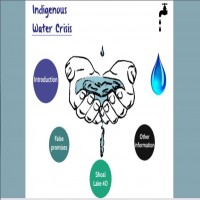Experts highlight indigenous knowledge on water utilisation
By A Staff Reporter
Kathmandu, Nov. 11:More than a millennium ago, our ancestors had such an advanced understanding of water management that they were able to collect, filter and supply it to every corner of their cities. People had enough water for drinking, cleaning, irrigation, cultural ceremonies and use in industries. But today, our cities suffer under chronic water shortages and we have failed monumentally in managing our water sources as seen by the destruction and pollution of ponds, rivers and watersheds.
We seem to have forgotten the knowledge garnered by our forefathers relating to water supply and management and have adopted a notion of development harmful to our hydrological environment.
These were the views that the experts speaking in the webinar on promoting Nepal’s indigenous water technologies for building climate-resilient communities expressed on Wednesday.
The webinar was hosted by the Avni Centre for Sustainability and the Impact Foundation in partnership with the Ministry of Education, Science and Technology (MoEST), United Nations Educational, Scientific and Cultural Organisation (UNESCO), Nepal National Commission for UNESCO, Nepal Academy of Science and Technology (NAST) and Kathmandu University on the occasion of World Science Day. Professor Dr. Sudarshan Raj Tiwari, former dean of the Institute of Engineering and a scholar on urbanism and architecture, explained how Hitis were a unique feature of the water system of Kathmandu and elaborated how the Lichhavi rulers systematised water management and source conservation in the valley.
Hydrology Expert Ajay Dixit also noted how the Hitis provided water to Kathmandu residents without disturbing the hydrological cycle. The water is brought from a variety of sources, collected in ponds and reservoirs, flowed from Hitis which then drain into fields for irrigation or lead into rivers which then replenish the water sources again, he elaborated. “However, in the name of development and urbanisation, we have destroyed the water channels feeding and draining the Hitis, built over the ponds and shrunk the rivers,” he said, highlighting the ways we have destroyed our native water technologies.
Sushil Shrestha, president of the Traditional Hiti and Pond Conservation Organisation, said that a lack of understanding of the small elements and the local context had prevented proper preservation of traditional water bodies. Giving the example of Rani Pokhari, he said that the authorities and activists involved used Kacha (mud used in fields to facilitate the growth of plants) instead of Gathecha (mud used to hold water) in the reconstruction and also covered the inlet and the outlet, leading to the famous pond becoming a stagnant pool. He also stressed the need to include Nepal’s water management system in the university curriculum to facilitate knowledge transfer.
Former Minister for Environment, Science and Technology Ganesh Shah stressed on the need to invest in the conservation of our indigenous water systems and produce manpower to work in this field. Surendra Subedi, joint secretary of MoEST, shared that the government was working to implement a policy on the promotion of indigenous knowledge.
Dr. Suresh Dhungel, spokesperson for the Nepal Academy of Science and Technology, also spoke on the occasion.
Recent News

Do not make expressions casting dout on election: EC
14 Apr, 2022
CM Bhatta says may New Year 2079 BS inspire positive thinking
14 Apr, 2022
Three new cases, 44 recoveries in 24 hours
14 Apr, 2022
689 climbers of 84 teams so far acquire permits for climbing various peaks this spring season
14 Apr, 2022
How the rising cost of living crisis is impacting Nepal
14 Apr, 2022
US military confirms an interstellar meteor collided with Earth
14 Apr, 2022
Valneva Covid vaccine approved for use in UK
14 Apr, 2022
Chair Prachanda highlights need of unity among Maoist, Communist forces
14 Apr, 2022
Ranbir Kapoor and Alia Bhatt: Bollywood toasts star couple on wedding
14 Apr, 2022
President Bhandari confers decorations (Photo Feature)
14 Apr, 2022











